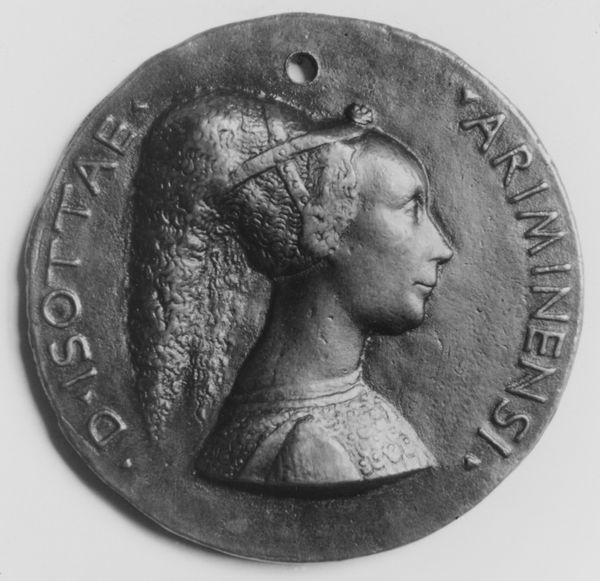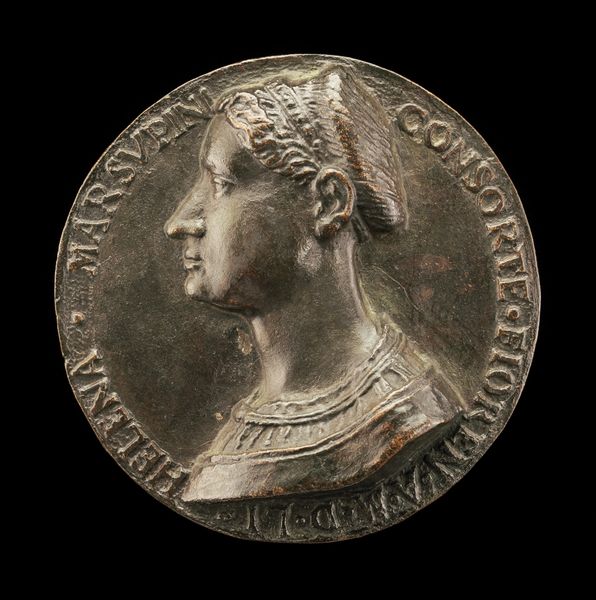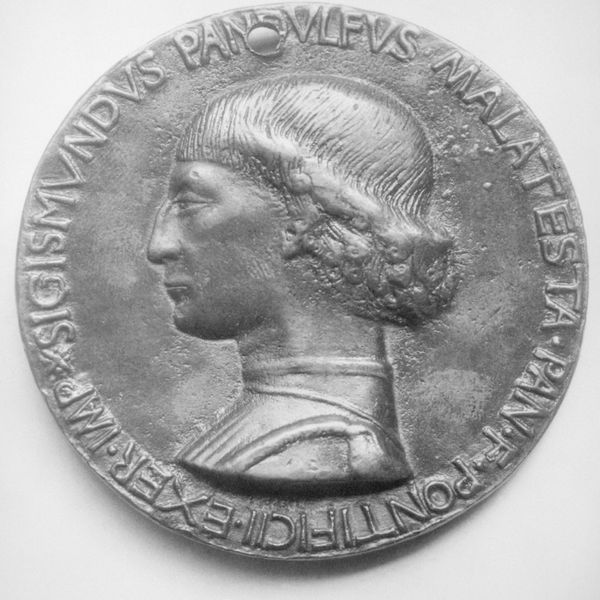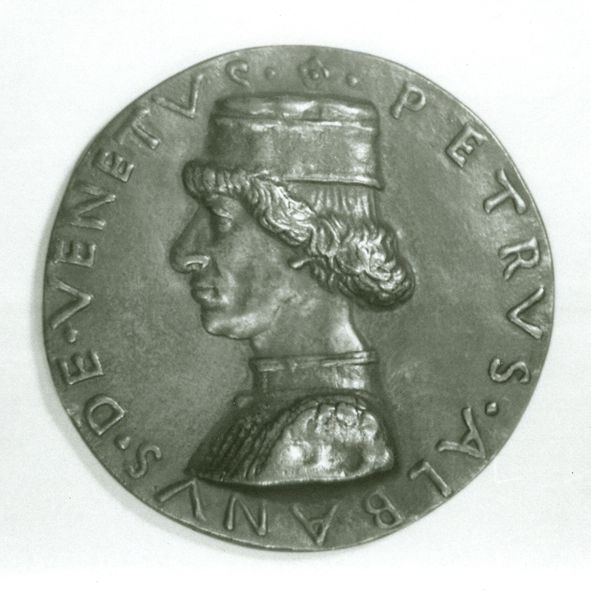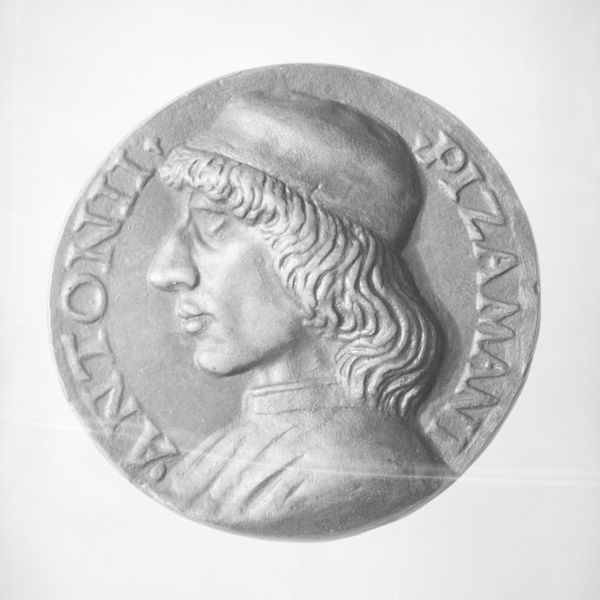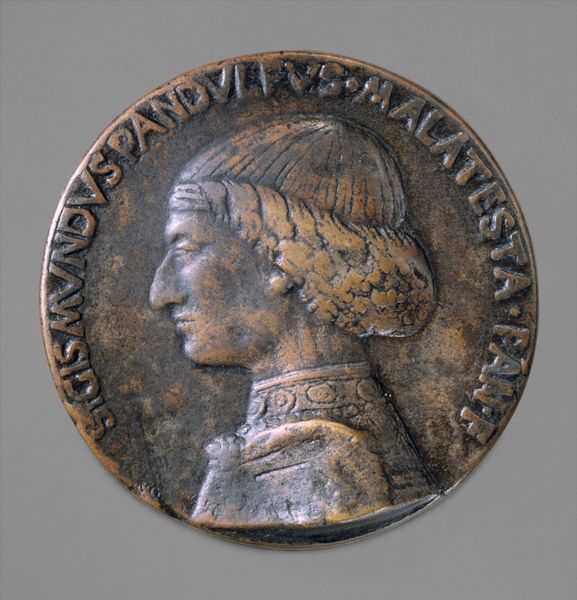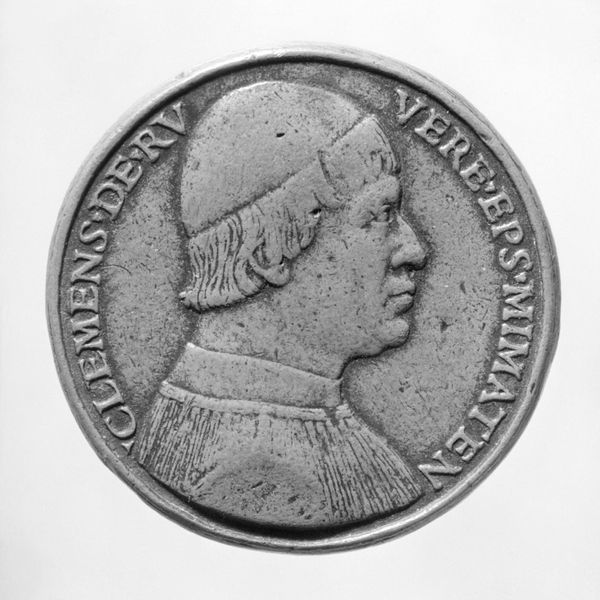
Sigismondo Malatesta as Captain of the Roman Church 1446
0:00
0:00
sculpture
#
medal
#
portrait image
#
close up portrait
#
sculptural image
#
black and white theme
#
portrait reference
#
portrait head and shoulder
#
sculpture
#
black and white
#
mid-section and head portrait
#
men
#
facial portrait
#
decorative-art
#
profile
#
statue
Dimensions: Diameter: 41 mm
Copyright: Public Domain
Editor: This is Matteo de' Pasti's bronze medal from 1446, "Sigismondo Malatesta as Captain of the Roman Church", housed at the Met. It's striking how such a small object, a medal really, conveys so much authority through that severe profile. What stands out to you about this piece? Curator: What interests me is the public role such medals played in shaping perceptions. Sigismondo Malatesta was a controversial figure, a condottiero, his reputation... let's say, complex. By commissioning such a medal, how do you think he was trying to craft his image and influence public opinion? Editor: So, it’s like early PR? To be seen not just as a warlord but as a legitimate leader, worthy of respect? He looks rather... noble in that profile. Curator: Precisely. These medals weren’t just art objects; they were instruments of power. They were distributed, collected, and displayed, embedding a particular narrative within the social fabric. The inscription itself – "Captain General of the Holy Roman Church" – speaks to that aspiration for legitimacy. Think about the visual language—what classical precedents might de' Pasti be drawing on to legitimize Malatesta? Editor: Roman coinage, perhaps? The clean lines, the emphasis on the profile… it's meant to evoke a sense of timeless authority, linking him to the grandeur of Rome. Were there any social impacts? Curator: Exactly. And consider the power dynamic: The Church employing him yet he crafts this strong personal brand that endures to today. Also consider that in his later life, the same church would exhume and burn his effigy! What does this juxtaposition tells us about the fluctuating power relations during the Renaissance? Editor: Wow, I hadn't considered that complexity! I thought it was just a portrait, but it really speaks volumes about image, power, and social perception in the Renaissance. Curator: Absolutely. These objects offer invaluable insight into the dynamic interplay between art, power, and the construction of historical narratives.
Comments
No comments
Be the first to comment and join the conversation on the ultimate creative platform.
